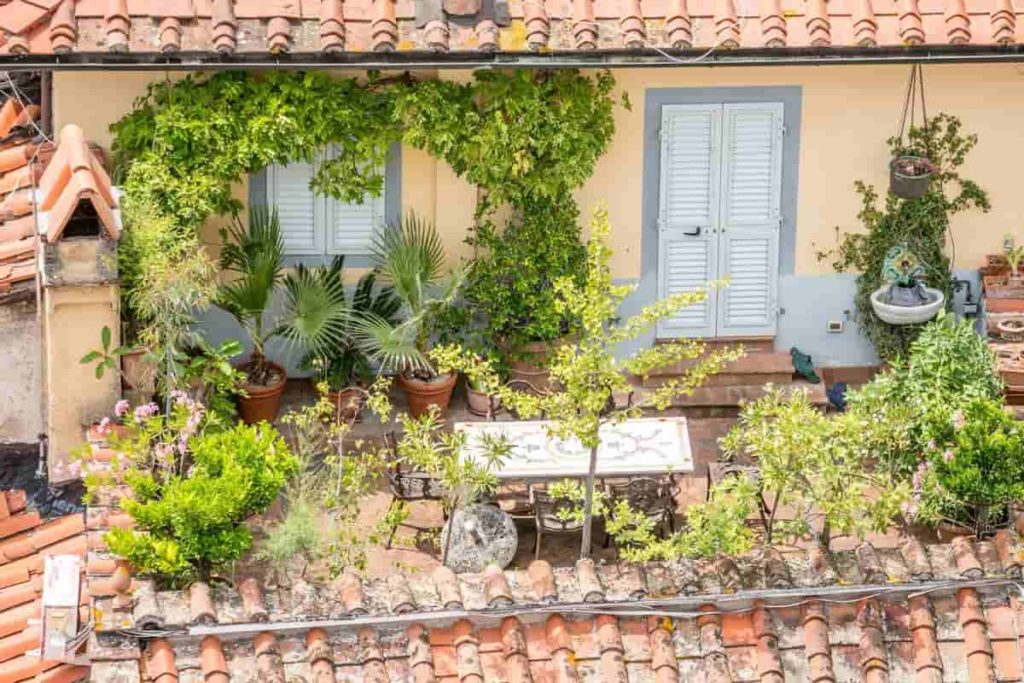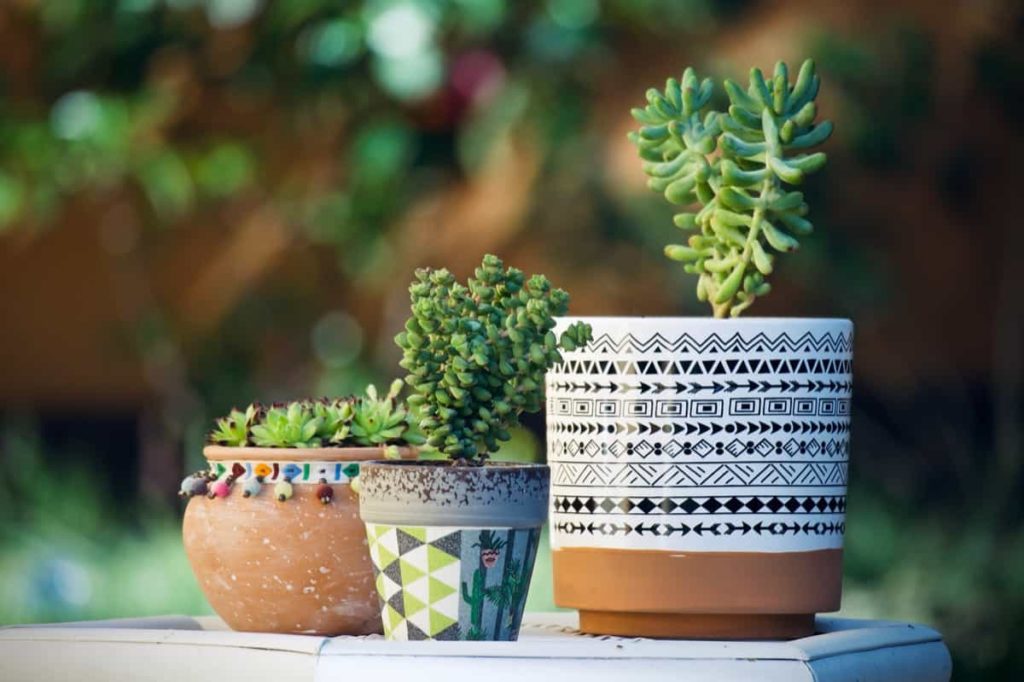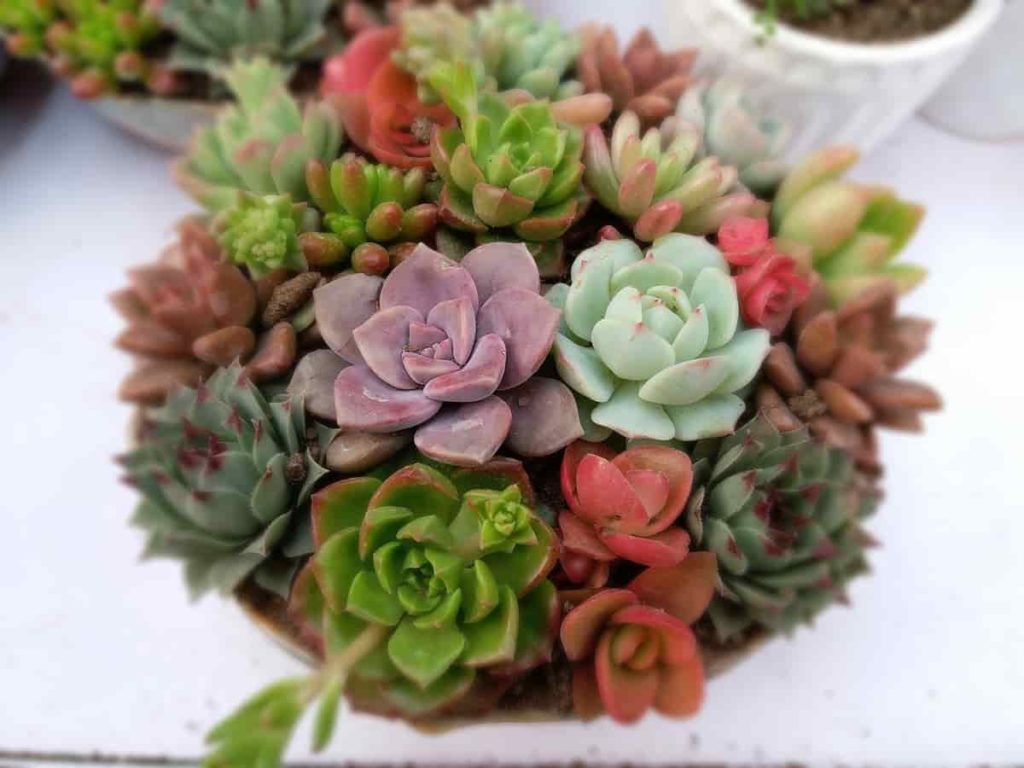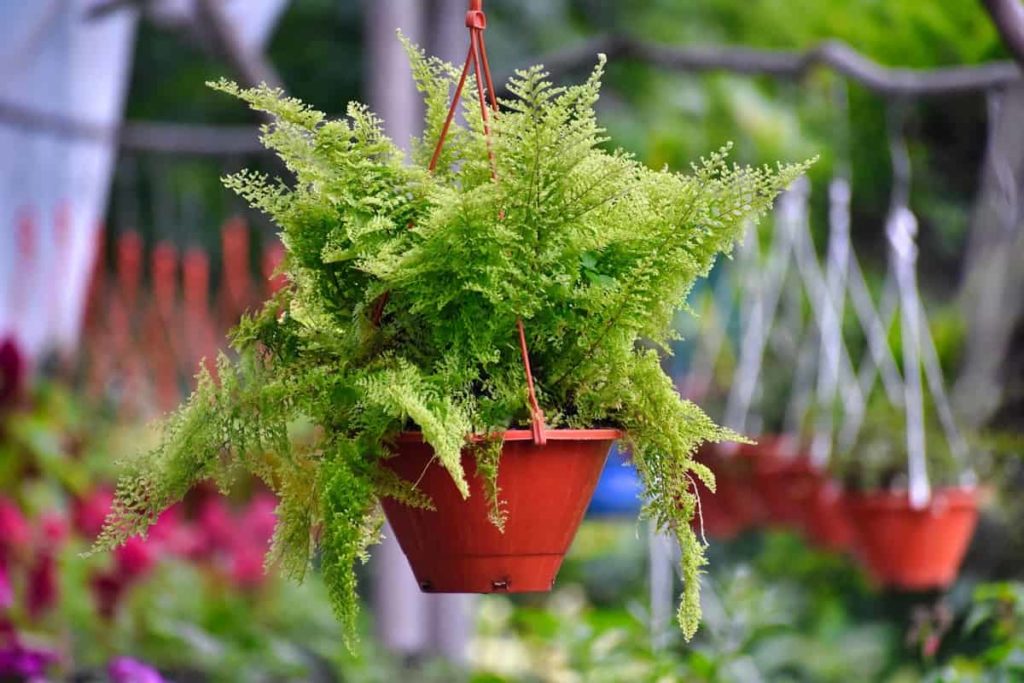Introduction to DIY terrace garden ideas: The term terrace gardens apply to two different types of gardens. First, terrace gardens are gardens built on terraces, roofs, or patios, often on the roofs of houses with limited gardening space. These gardens are often found in urban areas, and they are often used in restaurants and other establishments as well. Alternatively, a terrace garden is built in the form of terraced or raised beds on a hillside. Many of the oldest terrace gardens are found in Asia and South America, where terrace agriculture is the only option to use steep land.
Gardens on terraces or rooftops may be ornamental or functional, and they are usually planted in containers to make the terrace easier to maintain. Terraces can also be used as raised bed gardens. Garden objectives and the garden’s exposure to the sun are crucial factors to consider when establishing a garden. Others prefer to create a green retreat on their terraces by growing fresh herbs and vegetables. Sometimes, gardeners mix the two. Trees can be planted around a terrace to provide privacy or shade or create a pleasant recreational area for guests and residents. But, again, space considerations are important when developing this type of garden.
Guide on how to build a terrace garden and DIY terrace garden ideas

How to build a terrace garden
Get started: It is essential to check that your building can support the additional weight of plants. Make sure the roof slab is waterproofed. Inspect the building for damage before adding plants. If leaks are likely to occur in the future, it is better to do waterproofing again. Terrace gardens are made in two ways: covering the entire surface with soil to create a lawn or using earthen pots and planting seeds inside them. Make sure the roof is waterproofed if you are covering the entire terrace with soil. If the roof slab is exposed, it is recommended that a waterproofing layer be applied. A protective insulation layer is applied over the waterproofing layer.
Draining water: The absorption of water and nutrients is essential to the growth of any vegetation. It is, therefore, necessary that the soil be porous so that air can freely circulate and water can drain away. Waterlogging will also prevent the growth of plants. So the terrace must be equipped with a drainage layer. Over the insulation layer, a drainage layer is provided to drain the excess water. One type of drainage layer is a drainage mat. It is then necessary to lay a geotextile filter layer between the drainage layer and the soil layer. Plant debris and soil loss can otherwise block drains due to running water. Keeping soil and planting medium together is also beneficial. The soil mixture for growing plants should be placed after the filter layer.
It is possible to drain water away from a terrace by laying a burnt coal and sand bed with perforated pipes. If you are planting regular potted terrace gardens, you won’t need extra effort. First, provide drainage for extra water that drains through the pots. Next, you need to establish a source of water for your terrace garden. A water source must be close to your terrace; otherwise, it would be difficult to water the plants. Next, check the wind speed on your terrace. On your terrace, there is a higher wind speed than on the ground. Therefore, roof trellis is required if wind speeds average more than five mph throughout the year. You can also use them for vertical Gardening. They break the wind’s speed.
Create a plan for the terrace garden: Plan your terrace garden layout after checking the roof slab. It is essential to plan out the placement of various pots and recreational spaces carefully. Terrace gardens have fewer space constraints than formal gardens, so utilizing the space effectively is essential. Examine the areas that receive sunlight for the most time of the day and those that are shaded.
Plants for your terrace garden: We are taking a big step by creating a terrace garden. Many plants are available, but fiber-rooted plants are recommended over deep-rooted plants, which require deep soil and therefore require more weight. In addition, you should select plants that will shade the roof. Plants that require less sunlight must be placed in shady locations. Additionally, plants that require a lot of sunlight must be placed in areas that are not shaded. Alternatively, you can order the seeds online or purchase them from the nurseries in your area.
In case if you miss this: Top 15 Flowers to Grow in the Backyard

The best soil and containers for planting seeds: The soil needs to be selected according to the plants. Depending on the plants you have chosen, you need to fill the pots with different kinds of soil. For example, if you intend to cover the entire roof with plants, then the soil must be chosen such that the plants you have selected can grow in it. Terrace gardens need pots or plant containers. Earthen pots or cement pots can be used, depending on your requirement. As an alternative to regular garden beds, you can also buy raised beds for the terrace garden. Raised beds are more expansive than pots, which is a significant advantage. Hence, raised vegetable gardeners prefer beds. In addition, you can buy trellises for creepers, which will facilitate Vertical Gardening. To decorate your terrace garden, you can also hang small flowering plants.
Start gardening by assembling the elements: You can start gardening after purchasing all the necessary plants and containers. You can plant seeds outside and water them regularly, or you can plant seeds in pots on your lawn. To enjoy the calming effects of your garden, you can also decorate it with lightweight furniture. The following steps will show you how to construct your terrace garden easily. Initially, it would help if you planted a few plants, then increased the number based on your needs. Next, you can hire professionals to help you set up a terrace garden. Maintaining your terrace garden is essential. The plants must be regularly watered and protected from pests and worms.
DIY terrace garden ideas
Gardening in containers on the terrace: Terrace drain-cell systems can be pretty expensive to install. Pots, boxes, troughs, tubs, drums, and other containers are used to hold soil. You can read about container gardening planters here. The containers are laid over wedges or bricks to allow proper drainage and airflow between them and the roof.
The terrace is decorated with flower beds: You can make small flower beds directly on the roof. It is done by placing soil between a parapet and a wall on the inner side of the building. A wooden shuttering, stone, or brick inner wall is made from moisture-proof materials. Many annuals are suitable for terrace gardens, including Antirrhinum, Sweet peas, Stock, Pansy, Dahlia, Marigold, Chrysanthemum, Phlox, Dianthus, Alyssum, And Verbena.
Take the vertical route: Garden space is limited; therefore, vertical Gardening is a good idea. Climbers and trailers play a significant role in terrace gardens, which is why garden lovers should use more of them. A few can climb over a supporting pillar or ornamental arch, while others can spill over the top of the boundary wall and cover the brick and concrete. It is one of the best climbers, and Ficus repens can cover any wall. Climbing roses, Thunbergia, Passionflower, Railway creeper, and Thunbergia, are other attractive creepers. In the terrace garden, hanging baskets are an essential element. Online hanging pots are easily purchased. Many baskets are displayed with significant advantage at suitable places containing either flowering plants or foliage plants.
Plant and pick tall trees: Bamboo can be grown in corners, and shrubs can be grown on walls to maximize the greenery. By doing so, your rooftop will become a beautiful garden where you can wander, read books, and have fun.
Plant coniferous plants in a row: There is little maintenance required for conifers, making them attractive and versatile. In addition, these shrubs can block out the sights and sounds from your annoying neighborhood.
Establish a rooftop lawn: Lay artificial grass and add tables and benches on the terrace to create your own.
The right furniture: You can add a rustic vibe to your rooftop with a sofa, dining table, and chairs. You can enjoy family time or solitude.
Install a fountain: You can also include fountains on your rooftop garden, so they’re not just for the outdoors. You can complete the look of your terrace garden with a square water body and a miniature statue in the center.
In case if you miss this: Growing Plants In Paint Buckets For Beginners

Diversify your plants: Adding a rustic touch to your terrace is as easy as choosing a variety of tall plants, flowers, a few small trees, and ground cover.
The floor matters: Pick the correct type of floor for your rooftop garden because it can make or break the design. In addition, your garden needs to be suited to the climate. Finally, you must choose plants you plan to grow and a theme you plan to follow.
Plant different varieties of plants: Adding colorful plants to the terrace garden will create a calming atmosphere. A rooftop can be balanced with warm and cool colors by planting shrubs, flowers, trees, and annual plants.
Decorate your rooftop garden with tires: Make your terrace garden more attractive by introducing old tires as valuable objects. They can be painted to match the theme of the terrace and can be used as hanging flower containers.
Rooftop garden-themed on bonsai: Are bonsai plants your thing? You can show off your love for bonsai plants by growing different varieties on your terrace. Some famous examples are the Bodhi tree, the Baobab tree, and the Boxwood tree.
Rooftop garden in the patio style: Your terrace can be transformed into a beautiful patio using planters, flowering plants, trellis, and furniture. To achieve privacy, grow tall plants along the boundaries.
Decorate your walls with art: You can make your terrace garden more beautiful by painting breathtaking wall art on the terrace walls. As a result, your garden will look rustic and tropical.
Grass with layers: Fill your yard with luscious plants and grasses to make it feel like a forest. Fill empty spaces with dark greens and low forest plants that don’t require much sun. It will thrive in this environment if there are multiple types of grass and dark leafy bushes. You can use the safety rails and gates at the back of the terrace to your advantage. A line of ferns or bushy plants will dress it up.
Herbs layered: It is common for herbs to grow in small bunches to be double stacked and grown in planters together. As a result, your herbs and greens will grow over each other. Colorful varieties of these easy-to-maintain plants can be grown with sunlight and water.
Gardens on the pathway: An outdoor space is easily made into an entertaining space by planting small ferns alongside concrete paths. A different perspective is easily created with a creative design.
Building porches: Make a beautiful terraced garden where you can sit and relax. As a frame, use small trees and ferns to transform your porch into a garden. Tall trees and leafy plants can turn even a small backyard into a secluded garden.
Planters made of bark dust: Plants such as vibrant ferns and leafy trees are easy to care for from the back of an apartment. Likewise, it is easy to maintain a terrace garden with unique plants that do not require much growth. The most miniature terrace garden can be created using bark dust and compact planters.
Potted plants in small pots: Potted plants that are easy to grow can liven up your balcony or walkway. If you have space outside your apartment that gets sunlight, you can create a terrace garden. Flowers, vegetables, and little bushes can be grown in small containers with minimal space.
In case if you miss this: Top 20 Vegetables to Grow Indoors

Using cucumber containers: A large vine typically grows from this trendy vegetable. However, you can also grow it from a bush. For example, from a planter in a terrace garden, you could grow a small cucumber bush. The bush types grow low and require little maintenance. Vine cucumbers can still be grown in containers if you have a support beam. However, cucumbers can grow healthy if kept small, and the vines are kept away from one another.
Boxes of radishes: Radishes are small root plants that resemble beautiful leafy greens before harvesting. Overgrowing, they contribute to the health of your garden. Fleas and garden beetles will be discouraged from invading your terrace garden with these tiny roots. Consider planting some around your cucumber plant to keep it safe.
Set up Zen terrace gardening: Make your space look like a waterfall. Include greenery, leafy plants that grow in water, easy-to-build colorful rocks, and soothing colors.
Think about putting in a small stool so that you can sit down and enjoy your Zen terrace garden.
Pots for hanging: Take advantage of your space by moving vertically and installing metal grates. Planters and pots are held with garden wire. You can put them anywhere. Put on the ledge, in the air.
Shades of natural color: You can create natural shade and privacy you might not usually have access to with canopy plants that grow from above and small leafy trees.
The vibrant vine: You can enhance your terrace without taking up much space by using lattice or gridded wood for healthy vines. Of course, vegetables grow on vines on terraces, but vines have aesthetic value as well.
Arrange wooden boxes: You can use the garden boxes to create a natural seating area and home for your plants. Provide enough space for your plants to grow. Planting in wooden boxes constructed with suitable wood is a relatively common method of planting. Any size and shape you want are easily achieved with a box.
Ceramic planters are organized: Planters, trees, and boxes are used to create spaces on your terrace. You can create walkways and create walls with organized planters. Use patterns and variety in your planters to create the look you want. You can make your terrace look unique by using different colors and plants.
In case if you miss this: Top 30 Quick Growing Fruits In Containers/Pots

Stagged boxes: Make your walk-up stand out with layered wooden planters. Terrace gardening is gardening on slopes as well as on flat, paved surfaces. With layered flower boxes, you can maximize your space. While you should still plant flowers and vegetables with tiny roots, you can double your gardening efforts.
Pathways built from the ground up: Your terrace boxes are suitable to be planted with trees, ferns, or grasses, and your planters can be used as pathways. Get out of the city and into your garden with chic flower boxes and beautiful plants.
Terrace gardening on the roof: Although some living communities lack balconies or porches, every building has a rooftop. It is possible to grow plants on rooftops, but checking with the building’s super first is advisable. Numerous initiatives in urban communities are trying to promote rooftop gardening. Rooftop terrace gardening creates oxygen producers in the city and provides an excellent method of sustainable food production.
Urban community gardens: Rooftops provide ample flat space for building community gardens. In addition, you can grow vegetables from the roof by using set structures. You can grow more giant veins of vegetables in these terrace gardens, as well as bean arches.
Canopies in the garden: Keeping a rooftop garden simple requires basic structures and boxes. The rooftop space also allows planters to be spread out among the terrace. If plants are provided with the proper structure, they will produce more fruits, more oxygen, and more seeds.
Planters for decoration: Decorative planters are often used on even small rooftops. However, it is challenging to grow a garden in highly temperate areas. The greenery on a rooftop with limited water access, such as ferns and grasses, is ideal for terrace gardening.
Overflowing with greenery: Large trees and bushy plants growing on rooftops offer the best visuals. Amazing trees and plants can grow on rooftop terrace gardens when the sky is the limit. The proximity to the sun ensures that these plants receive plenty of light. Dry climates, however, require them to receive adequate watering.
Commonly asked questions about terrace gardening
What are the steps to set up terrace gardening?
- Create a layout.
- Decide which plants to use.
- Providing waterproofing.
- The preparation of the soil.
- Pots or containers for plants.
- Plant seeds.
- Additional watering requirements.
What kind of soil is best for a terrace garden?
Ideally, soil mix should contain equal amounts of regular soil, compost coir peat (or sand), and vermicompost. It is essential to replenish soil nutrients after heavy rains, as the water tends to wash them away. You can add compost every week or so to make sure the soil has enough nutrients.
Vermicompost is it suitable for terrace plants?
Plants grow faster and healthier with vermicompost, organic fertilizer, and manure rich in nutrients. Vermicompost is non-toxic, nature-friendly, and a preferred nutrient source for organic farming and home gardening. In addition, natural processes aerate the soil and improve its quality.
What are the advantages of terrace gardens?
- Reduces the indoor temperature by 6 to 8 degrees and reduces air conditioning costs
- Insulate the building against heat and cold to reduce overall heat absorption
- It is a convenient way to get pesticide-free and fresh fruits and vegetables
What is the best way to maintain a terrace garden?
- Growing organic vegetables in your garden are possible
- You can plant flowers like sedums or alpines if you have little soil for terrace gardening
- Put plastic containers to use. Terracotta is heavier and doesn’t hold moisture as well as plastic
- Don’t water your plants when it’s raining
- The sun is another important factor
In case if you miss this: Budget Garden Ideas, Cheap, Low Cost, and Affordable

What are the requirements for a terrace garden?
You should ensure that the roof is waterproof to prevent water from seeping into the room below. Unfortunately, it is not possible to skip the civil work required for complete waterproofing. In addition, the terrace should have adequate drainage so that rain and irrigation water can drain off quickly.
What are the growing conditions for Terrace plants?
- Ensure that you have all the materials needed
- Create a layout for your terrace vegetable garden
- The preparation of the soil
- Decide on the container for the plants
- Selecting the Vegetables
- Put your seeds in pots and start planting
- Keep your plants from becoming thirsty
Is it possible to grow trees on the terrace?
Depending on where you plant the tree, the height may range from 3 to 40 feet. Pots and containers are used to grow it on the terrace. Plants in hanging baskets enhance an attractive terrace garden. It is also suitable for being planted on fence lines.
- Where to Place Indoor Plants in Your Home
- How to Grow Tomatoes Organically at Home: A Comprehensive Guide
- Organic Gardening on a Budget: Low-Cost Methods and Materials
- Gongura Seed Germination and Planting Methods
- Cabbage Seed Germination and Selection
- Broccoli Seed Germination and Selection
- Asparagus Seed Germination and Variety Selection
- Seasonal Flower Gardening: Best Practices for Spring, Summer, Fall, and Winter
- How to Grow Hibiscus from Flower
- Plantation Ideas for Home Decoration: A Beginners Guide
- Flower Garden Designs and Layouts for Beginners
- Planting and Spacing Techniques in Papaya: A Beginner’s Guide
- Growing Gold: Essential Techniques for Planting Pineapples
- How to Make Kalanchoe Plant Bushy: Home Remedies and Solutions
- 11 Reasons Why Your Gardenia is Not Blooming: Home Remedies and Solutions
- Eco Elegance: The Guide to Designing a Drought-Tolerant Landscape
- Gardening on a Slope: Strategies for Hillside Landscaping
- Nourish and Flourish: Top Organic Mulches for Thriving House Plants
- Everything You Want to Know about Indian Mogra Flower: Discover Uses and Growing
- Green Thumb Success: Expert Tips for Cultivating Greenhouse Pumpkins All Year Round
- Maximize Growth & Flavor: The Ultimate Guide to Companion Planting in Herb Gardens
- How to Control Rhododendron Problems Naturally: Home Remedies and Organic Ways to Fix Them
- Natural Magic: The Remarkable Benefits of Cinnamon for Plants
- Best Steps to Revive Dying Tulip with Natural and Organic Treatment
- 10 Reasons Why Your Angel Trumpet is Not Blooming: Remedies and Treatment
- How to Fix Periwinkle Leaf and Flower-Related Problems: Natural Remedies and Solutions
- How to Fix Zinnias Leaf and Flower Problems: Discover Natural and Home Remedies
- Organic Steps to Induce Lemon Tree Flowers: A Comprehensive Guide
- Bloom Booster: Crafting the Perfect Homemade Bougainvillea Fertilizer
- Optimizing Growth: A Guide to Applying NPK Fertilizer for Potted Plants
- 10 Best Homemade Fertilizers for Rubber Plant: DIY Recipes and Application Method
- How to Boost Female Pumpkin Flowers: Effective Steps for More Flowers and High Yields
- Transform Your Indoor Garden: Top Benefits of Pink Salt for Houseplants
- 10 Best Homemade Fertilizers for Peacock Plants (Calathea): Easy DIY Guide
- Unlock Blooms: 9 Reasons Why Your Potted Chrysanthemum is Not Blooming
- 8 Reasons Why Your Potted Hibiscus is Not Blooming: Fix it with Simple Solutions